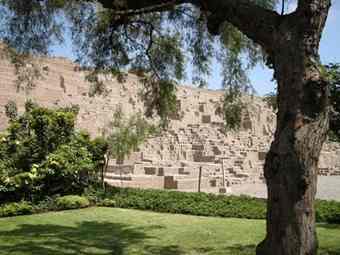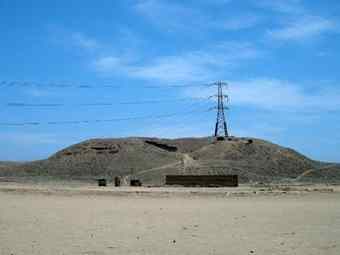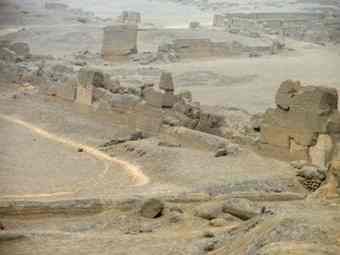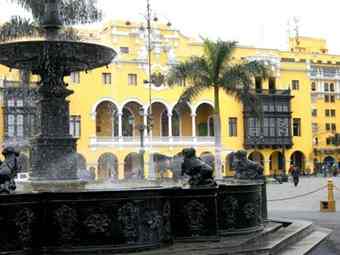Imagine landing for the first time in Lima, Peru and the flight attendant saying something like this: “Welcome to the two-thousand-year-old city of Lima.”
 Or even better: “Welcome to the oldest inhabited city in the Americas and the Pacific Rim.”
Or even better: “Welcome to the oldest inhabited city in the Americas and the Pacific Rim.”
It is true, at times Peru seems to be a place where anything and everything is possible. Only this time, calling Lima the oldest inhabited city in the continent could be true, according to evidence that has been coming to the surface in recent years.
Based on this I launched Lima Milenaria early this year, a campaign that is asking the next mayor of Lima to declare the city a Millennium City. This would be, according to the information available, a more correct way to identify the Peruvian capital.
Most of us grew up believing that what was here before the Spaniards arrived was insignificant. So we really didn’t pay too much attention to that past. Ask anyone here and they will say that Lima is 475 years old. And that would be right, to a point.
Lima only had one proper foundation that we know of, and that was in 1535. The question is, what do we do with the past before then? What place does it get in the official narrative of the city?
Proof of Lima’s ancient history
Some 30 years ago a number of archaeologists started focusing their efforts in Lima, and began a very silent work in many of the huacas.
 Slowly, what they have been uncovering from under hundreds of years of neglect, has transformed what we knew about the past.
Slowly, what they have been uncovering from under hundreds of years of neglect, has transformed what we knew about the past.
In Lima, suddenly magnificent temples came back to life, palaces resurfaced, places of complex urban design came to the light to tell us a very different story. “We need to reconsider the history of Lima,” Isabel Flores told me, the archaeologist who has devoted half of her life to Huaca Pucllana.
“In the past limeños didn’t know about their own history. But now we know more about the people who lived here. We just need to let everybody know about this,” she says.
Flores cannot hide a quiet dose of pride when she talks about this. Her Huaca Pucllana has been transformed from a rubbish-den 30 years ago to one of the city’s main touristic attractions.
The same applies to excavation works done by her colleagues in places like Maranga, Huallamarca, Mateo Salado and others.
Peru’s future
But why focus so much on the past? For Lima to play a bigger role as a touristic destination in the Americas, then it needs to get its own story right.
 Architectural evidence starts here some 4,000 years ago, with the U-shaped temples that still exist today, but it is 2,000 years ago that we see the beginning of what perhaps was the most interesting and complex of all cultures that have inhabited this territory: the Lima culture.
Architectural evidence starts here some 4,000 years ago, with the U-shaped temples that still exist today, but it is 2,000 years ago that we see the beginning of what perhaps was the most interesting and complex of all cultures that have inhabited this territory: the Lima culture.
It is them who, in my view, set the first stone of an urban development that has continued uninterrupted until today.
In the last two millennia we have survived wars, invasions, diseases, El Niño and La Niña phenomena, fires, earthquakes, more invasions, more wars and terrorism. And yet we continue here. Still building, still creating.
To know this is a great source of strength, identity and energy for Lima. And that was one of the reasons behind the idea of Lima Milenaria, a campaign inspired by the wealth of evidence that is coming to the surface.
The Lima Millennium project
One of the main pillars of Lima Milenaria is to ask the next mayor of Lima to do simply that: Declare Lima a Ciudad Milenaria. Declare Lima as the oldest continuously inhabited city in the continent and the entire Pacific Rim.
 The possibilities this would allow are, in my view, wide and exciting. It is not a reaction against Peru’s Hispanic heritage. It is more an effort at reconciling our present with its past, in one official narrative. This could only make the city stronger.
The possibilities this would allow are, in my view, wide and exciting. It is not a reaction against Peru’s Hispanic heritage. It is more an effort at reconciling our present with its past, in one official narrative. This could only make the city stronger.
For the last two months we have been asking the mayoral candidates to give an interview and discuss their ideas around issues like identity, history, citizenship and to introduce them to the proposal of Lima Milenaria, but they have not paid attention to this.
For most limeños this attitude is not surprising. “They don’t care about culture,” friends tell me. But I happen to believe that us citizens and Lima herself deserve more not only from the candidates but mostly from the next person who will be in charge of managing the city.
The next mayor of Lima will hold a historic opportunity to transform this city. Will he or she rise to that challenge?
Usually we complain about how little people care for Lima, but you cannot love what you don’t know. If at least the next authority starts letting limeños know who we are, what we have done and where we can go, then we will have taken a step in the right direction.
Author: Javier Lizarzaburu | Source: Living in Peru [September 07, 2010]